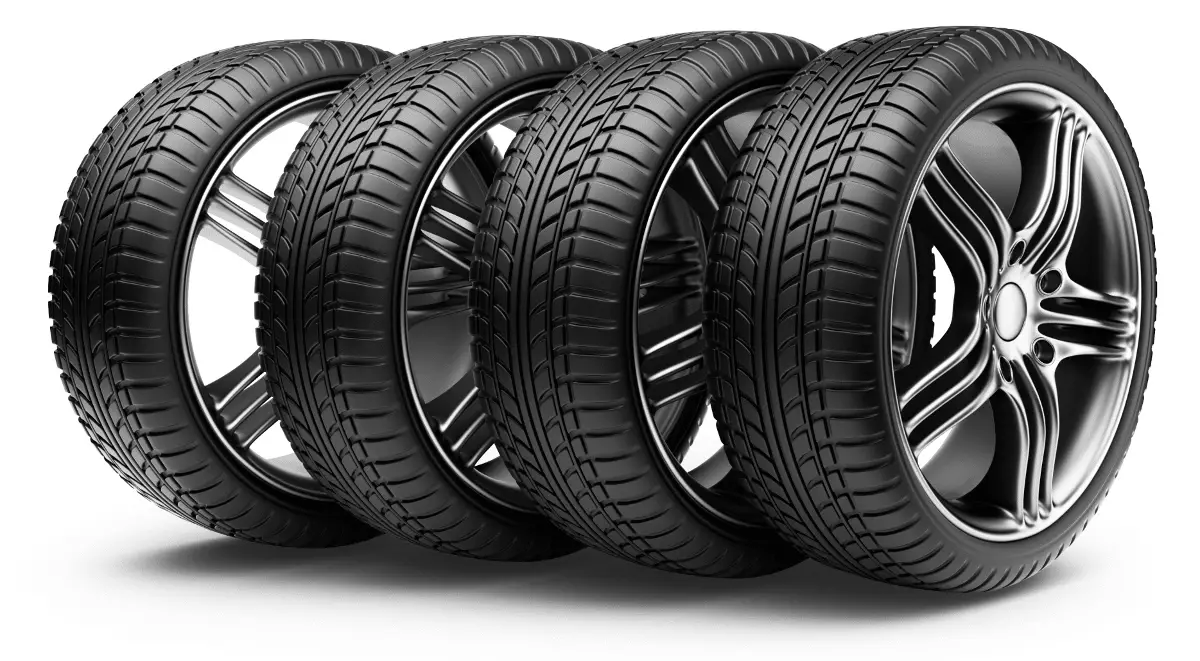Old used tires are unreliable and dangerous. They have been known to cause dreadful accidents. The terrible car crash that ended the life of the actor Paul Walker was reported to have been caused by the nine-year old tires that compromised the handling and drivability of the Porsche Carrera GT he died in, states the Los Angeles Times. Going super-fast did not help either but you must maintain your car.
With time the rubber of our tires start to deteriorate. Including tires that have never been used. Which only goes to show how hazardous old tires can be. If you drive 12,000 to 15,000 miles annually, the treads on your tires will wear out quicker than the rubber compound, within three to four years. But if you don’t use your vehicle as often, your main issue will be the aging tires.

What happens When a Tire Gets Old?
Consider a rubber band that is a couple of years old. When you stretch it begins to crack and break. Which is a somewhat similar situation with aging tires. These cracks don’t just show up on the outside of the tire they exist on the inside as well and can lead to the steel belts in the treads to separate from the tire.
All tires age, there is no avoiding that. There may be tires specially designed for higher mileage. They contain “anti-ozinant” chemical compounds which are added to the rubber to slow the tires from aging. However, there is no stopping the effect time has on the rubber.
For how Long will a Tire Last?
According to the National Highway Traffic Safety Administration (NHTSA), there are no real guidelines regarding the aging of tires. Rubber manufacturers, tire manufacturers and car manufacturers all have very different opinions on the durability of tires when it comes to their age. The quality and reliability of a tire over time will depend on its make and the kind of car that uses it.
Car brands like Mercedes and Nissan say, after every six years from the date of manufacture, their consumers must change their car tires. Irrespective of the tire’s tread life. On the other hand tire manufacturers like Michelin and Continental claim that tires can last for a total of 10 years, that is, if they are inspected after five years. In case of the Rubber Manufacturers Association, they say you cannot specify when exactly car tires will expire. That is because more than one factor deteriorates tires. You have:
- Storage
Mounting a spare tire under your vehicle or on your vehicle means it is exposed to the elements, while inside the trunk it is heated. And, a tire that is inflated and mounted on a wheel is basically in use, even if it does not directly meet the road. In all these cases, the tire will wear out quickly. However, tires that have not been mounted and are sitting in a tire shop in nice pleasant temperatures, will deteriorate much, much slower.
- Condition of use
This considers the manner in which the tire is used. If it was repaired as a result of a puncture, improperly inflated or hit against the curb multiple times, all of these factors will determine how fast your tires age.
- Heat
The NHTSA has found that the tire aging process is accelerated in warmer climates, costal climates, and when directly exposed to sunlight.
Make sure you get your car tires inspected regularly to know how worn there really are. Also have them rotated so that they wear out evenly.
How to Figure Out a Tire’s Age?
The numbers and letters on the sidewalls of a tire are supposed help you determine the tire’s age. But to decipher these numbers and letters you need its US Department of Transportation (DOT) number. All tires made in 2000 have a DOT code of 4 digits. The first two digits refer to the week of manufacture and the last two, the year. Before 2000 the number had 3 digits.
The first two were the week and the last one the year in the decade. Some had a triangle symbol after the DOT code specifying the decade, those without, had the “328” code, meaning it was made in the 32nd week of 1978 or 1988. All of which is very confusing. To add to the inconvenience, the codes were written on the inside of the tire, making it difficult to see. However, now the NHTSA requires manufacturers to show this information on both sides for easy reading.
Safety Tips
Check new tires before buying
Age is just as important as usage. So make sure you get fresh tires instead of old ones that come in cheap because they’ve passed the warranty period. Because unused is not new!
Never buy used tires
Used tires may come cheap, but they lose their ability to be effective tires. You don’t know if the tires have been maintained properly, neither do you know the conditions they have been in.
Inspection
Once you know how old the tire is visually inspect it. Look for signs of aging like cracks, vibrations, or dynamic changes that affect the performance of the tire. When you notice this, it’s time to change the tire or get rid of the stored spares.
The best thing you can do to judge the age and safety of your tires is inspect them. If you’ve had them for around five years, it is time to have them inspected because who knows your life may depend on it.
